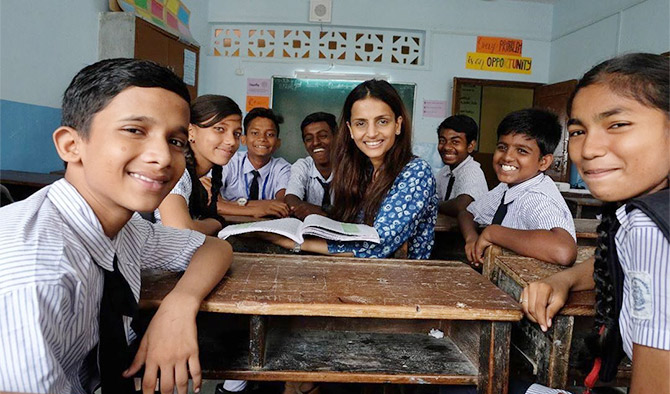The National Education Policy (NEP) 2020 was recently approved and its revolutionary ideas are being discussed not only among experts but also by common people of the country. Proposing a revamp of the entire education structure, this policy has received a divided response with some applauding it and others being skeptical about its implementation. With a two-year experience of being a teacher through ‘Teach for India’ and a public policy post-grad, I find myself in the latter group too.
Since Independence, education has been given a top priority to address the literacy levels in urban and rural areas. The National Policy on Education in 1986 and 1992 focused on compulsory education for children up to 14 years, being more inclusive of all communities and introducing common entrance tests for professional courses. In 2009, The Right of Children to Free and Compulsory Education Act (RTE) was passed which announced that all children from the ages of 6 to 14 will be provided free education and also stated other requirements to improve the quality of education.
RTE and ground reality
I had the opportunity of witnessing the execution of RTE on ground through my two-year fellowship in Mumbai. Having read the RTE Act in the first year, I started observing the differences between what was on paper and what was happening on ground, especially in the underprivileged areas.
Features like free education, no detention policy, non-discrimination of any child for admission and schools in neighbourhood were well implemented in the two schools located in the slums of the city, where I taught. However, many salient requirements of the Act were not appropriately executed nor were the authorities and parents aware about them. Under Chapter 3 of the Act, the Government is obligated to provide necessary infrastructure like teaching staff, learning equipment and training facility for previously out of school children. The schools I was at did not have well-functioning classrooms i.e. usable blackboards, working lights and fans, non-leaking roofs or enough desks and benches. Neither were there science labs, playgrounds or computer labs with enough computers. There were no well-maintained toilets, potable drinking water or helping staff for cleaning the premises.
Apart from this, what was surprising was that there were not enough teachers for all the subjects. The mentioned teacher-pupil ratio was never maintained. I was teaching Mathematics and Science to 95 students in 10th grade. Teachers were burdened with substitutions and had to take on subjects more than their share.
Section 21 of this Act details out the requirements and duties of School Management Committees (SMC). Elected local representatives, parents and teachers were to form the SMC, create a School Development Plan and monitor the working of the school. The Principals of both the schools were not aware of such a requirement and thus never sought to form it.
The learning outcomes of students were also not at par. Since students could not be held back in classes anymore, even those who failed were promoted to higher grades. Interacting with students from other grades, I realised that many Grade 7 students did not know basic addition and multiplication. Neither could they read and comprehend sentences in English or Hindi. This trend was observed even at the national level according to the ASER 2018 Report Card. It says that in 8th Grade, only 43.9% of the students can do division and 28% of Grade 7 students can recognise numbers up to 99 but do not know subtraction. In government schools, only 44.2% of students in Grade 5 can read only up to a Grade 2 level text.
NEP 2020 and the future
Analysing the National Education Policy (NEP) through the lens of my experience in schools of a top tier city like Mumbai, has risen doubts about its execution. The previous 10+2 structure which included children from the ages of 6 to 18 years has now been modified to a 5+3+3+4 structure, thus including ages 3-6. Students in higher grades will be given the flexibility to choose subjects and there will no longer be any hard separation between different streams like science, arts and humanities. School complexes are encouraged to be created where they can share resources and infrastructure.
The NEP has stated that by the year 2025, universal foundational literacy and numeracy should be achieved in all primary schools. Languages are given great importance in the document, stating that the medium of language should be the home language till Grade 5 and textbooks will also be made available for them. Vocational courses will also be encouraged by highlighting its benefits and giving students from Grade 6 an opportunity to intern for it. There will also be common entrance exams for undergraduate and graduate admissions where students will be given the freedom to choose the subjects.
The process for employing teachers will be more transparent with special attention given to teachers who know local languages. The pupil teacher ratio (PTR) should also be maintained at 30:1 as mentioned by the policy and there will also be continuous training provided to teachers. The policy emphasises the use of technology and online classes.
Although the policy seems groundbreaking, it does not specify how to achieve all the mentioned aspects, making it seem over-ambitious. Increase in allocation of the budget i.e. 6% of the GDP as compared to the previous 3% will help in some areas. If schools in a city like Mumbai do not have the basic infrastructure like labs, clean toilets, drinking water, staff rooms and internet facilities, one can well imagine the scenario in rural schools. In 2018, 58% of the schools in Arunachal Pradesh, 43% in Assam and 35% in Uttar Pradesh needed repairs of the buildings. And in West Bengal, 26% of teachers said that there was no facility for drinking water and clean toilets.
Teachers should have the expertise needed to be able to teach classical languages and given proper training to keep up to date with the latest educational practices. There were more than 10 lakh vacancies for teachers in India in 2018, and in 2016, 14% of the secondary school teachers were not professionally qualified. The needed PTR is not maintained in top-tier city schools, seeking such results in a decade or two throughout the country seems like a far-fetched idea.
Online classes as an alternative could seem possible if every household had the needed facilities. In 2018, only 24% had internet and 11% had any type of computer. Uninterrupted electricity is not available in most homes. Students located in villages and remote hilly areas may not be able to access the latest technology and will fall short of experiencing new forms of learning. The global pandemic has highlighted the failures of online classes.
Twenty years to achieve the aim of the NEP seems quite less when we look at the impact of RTE for the last ten years. None of the aspects mentioned in the RTE Act have shown a full 100% result. The NEP 2020 is aiming to do too much, with too less of time and resources.


 [/column]
[/column]